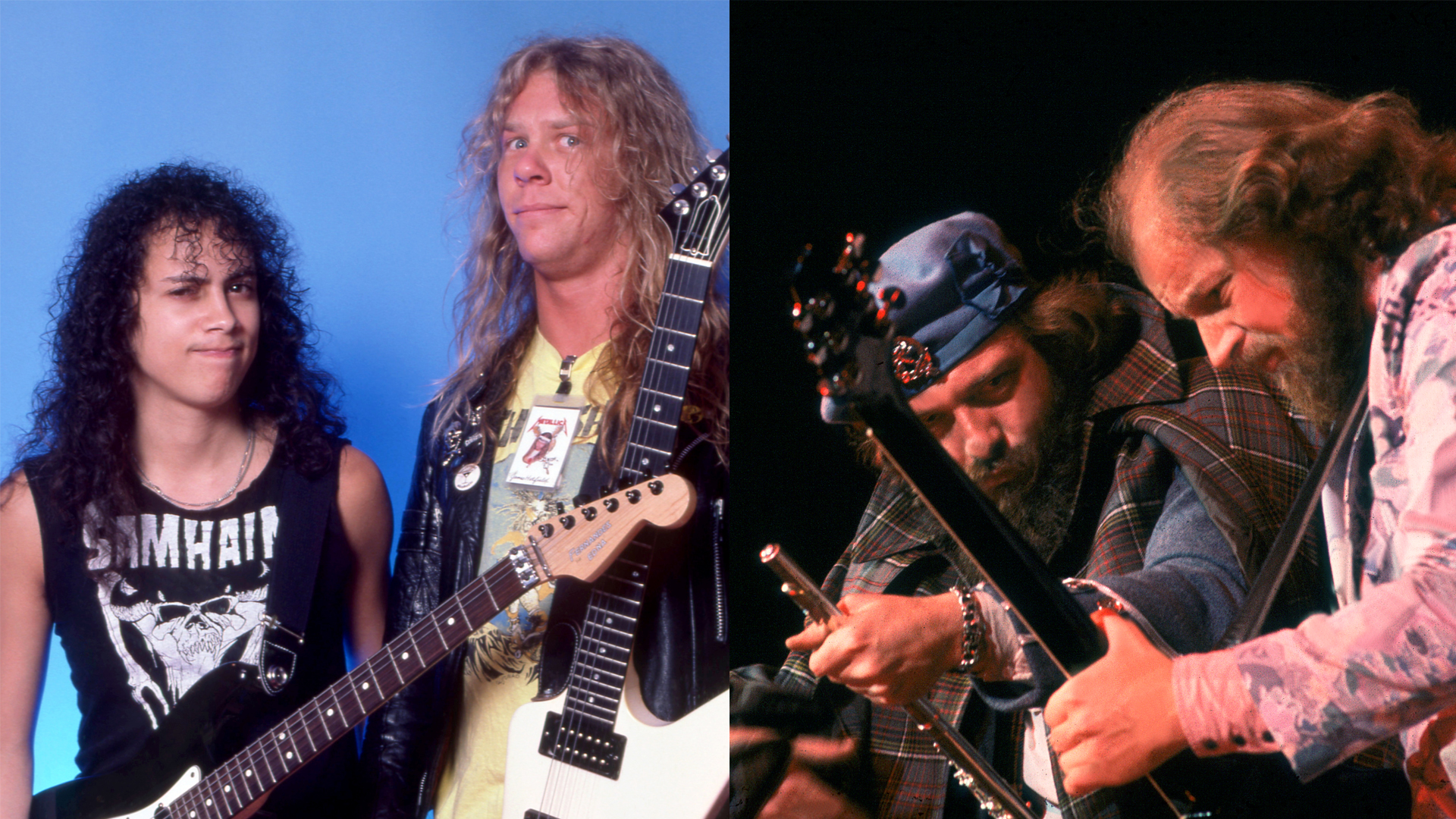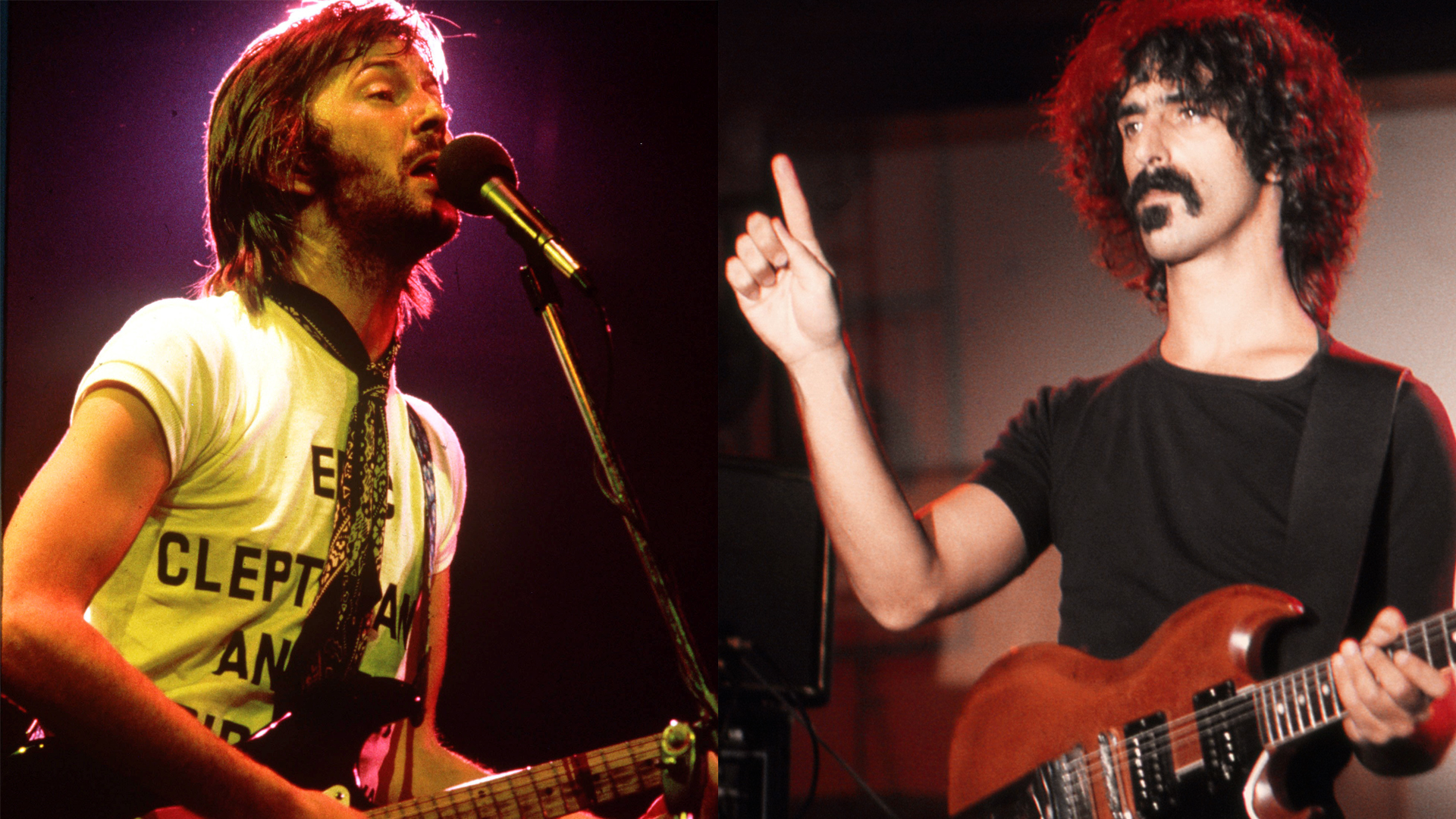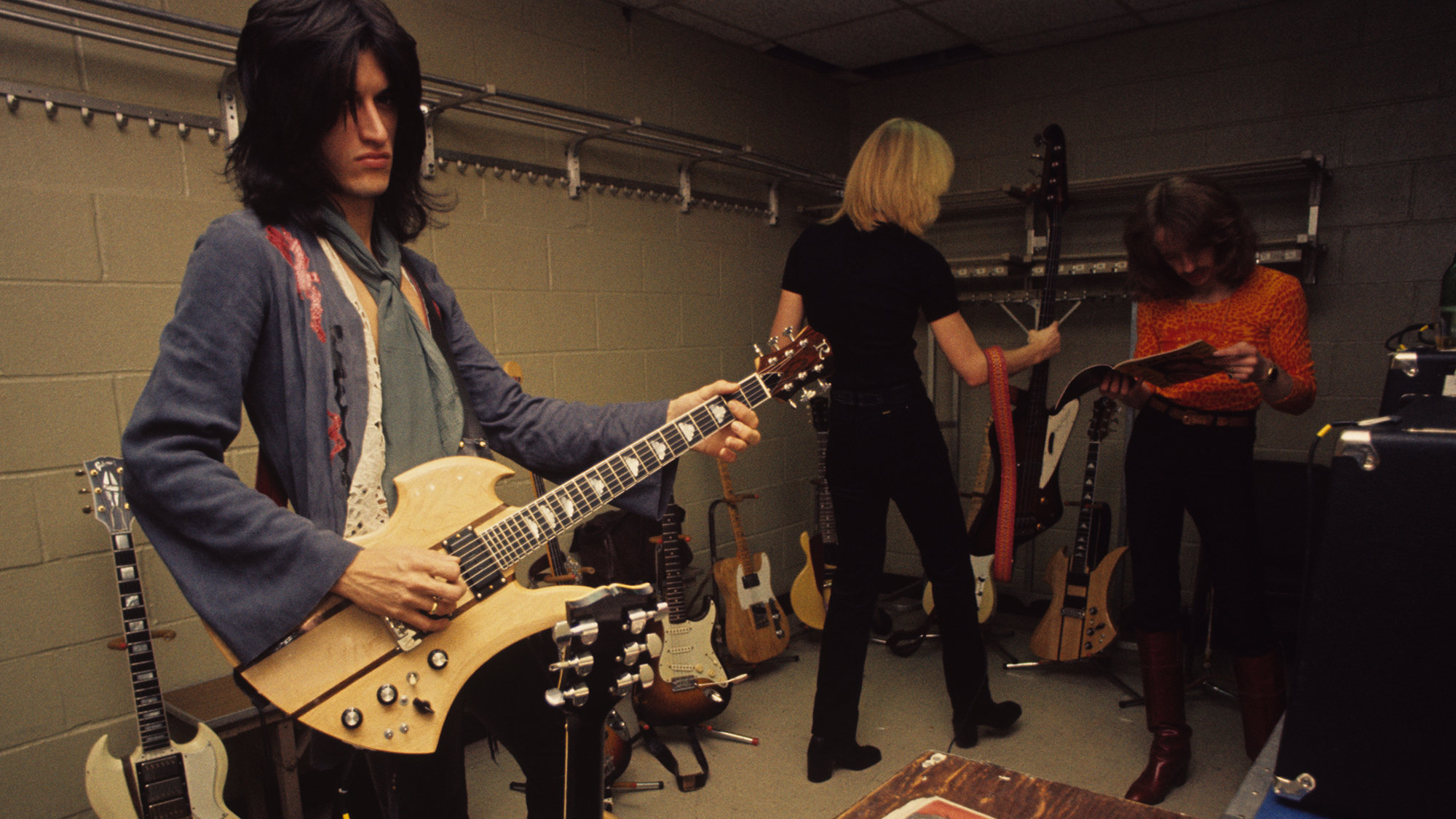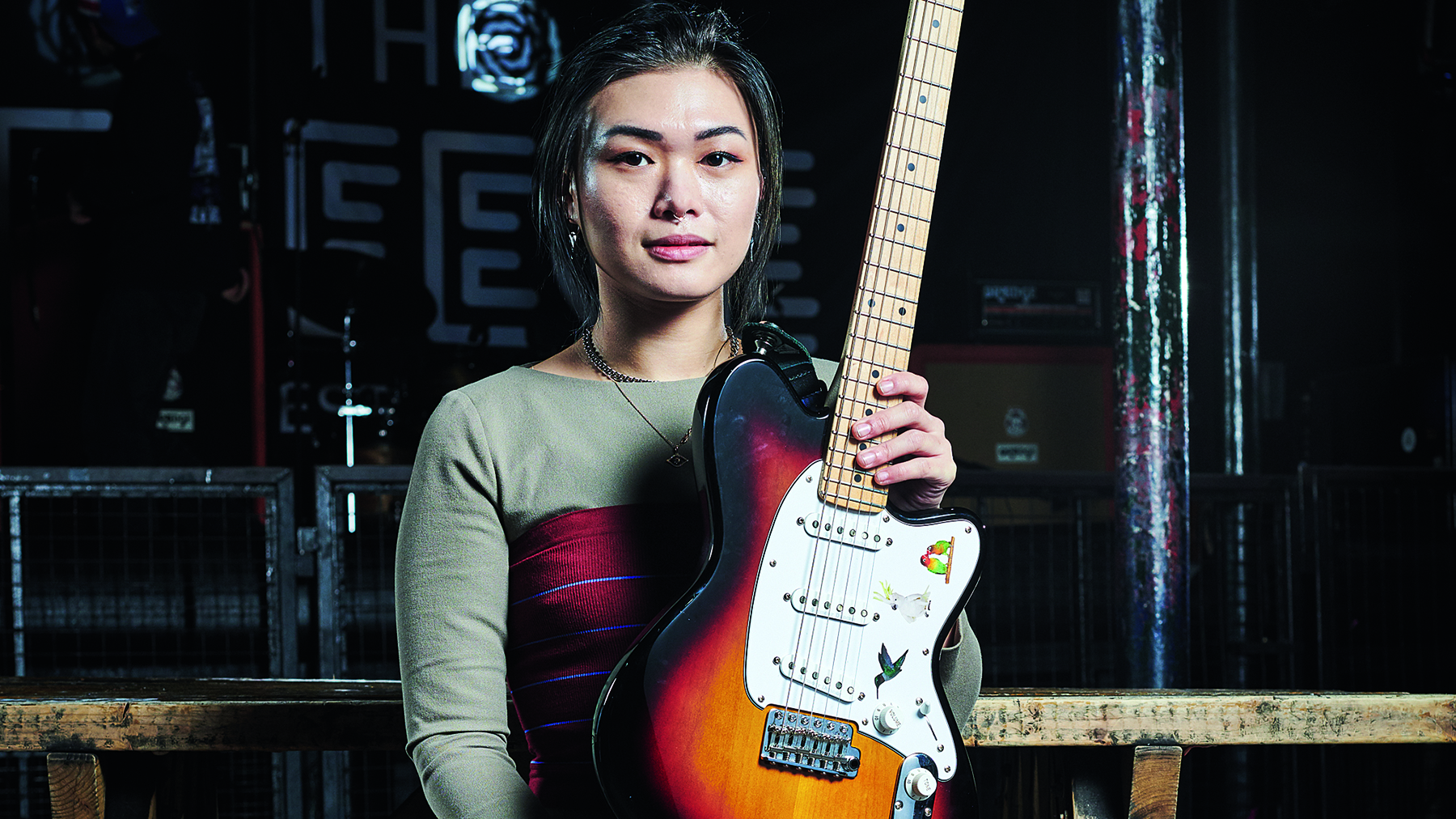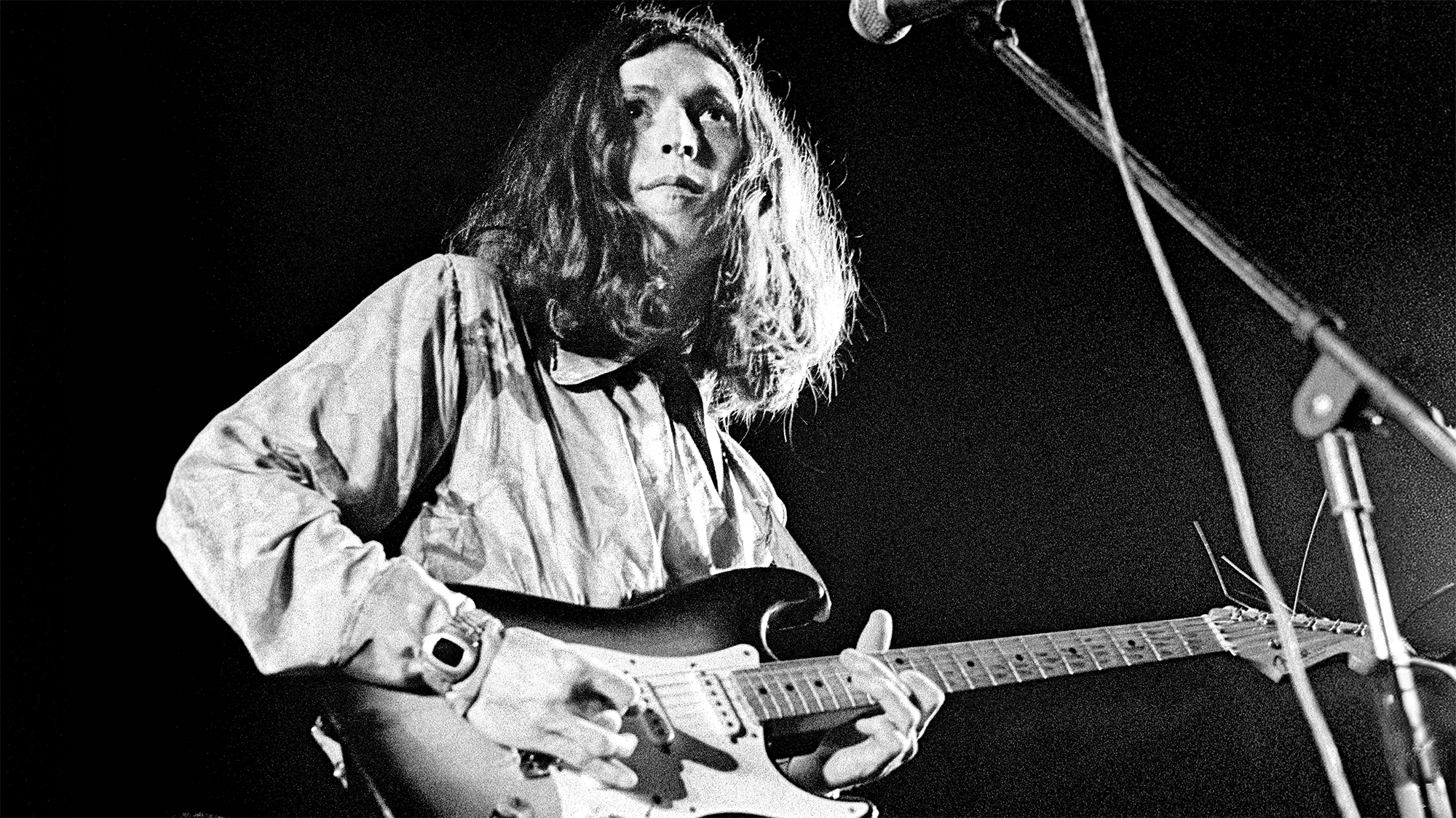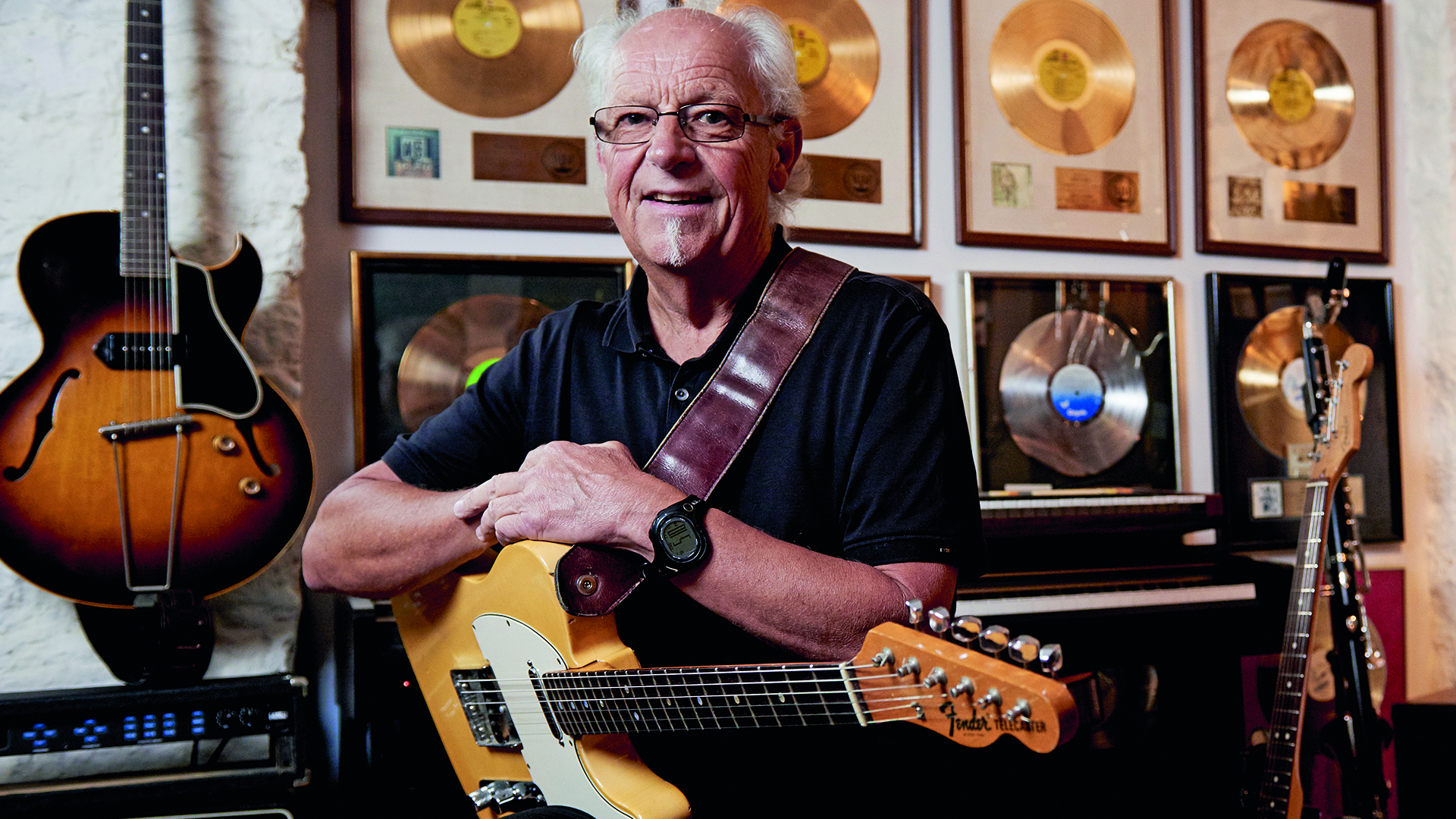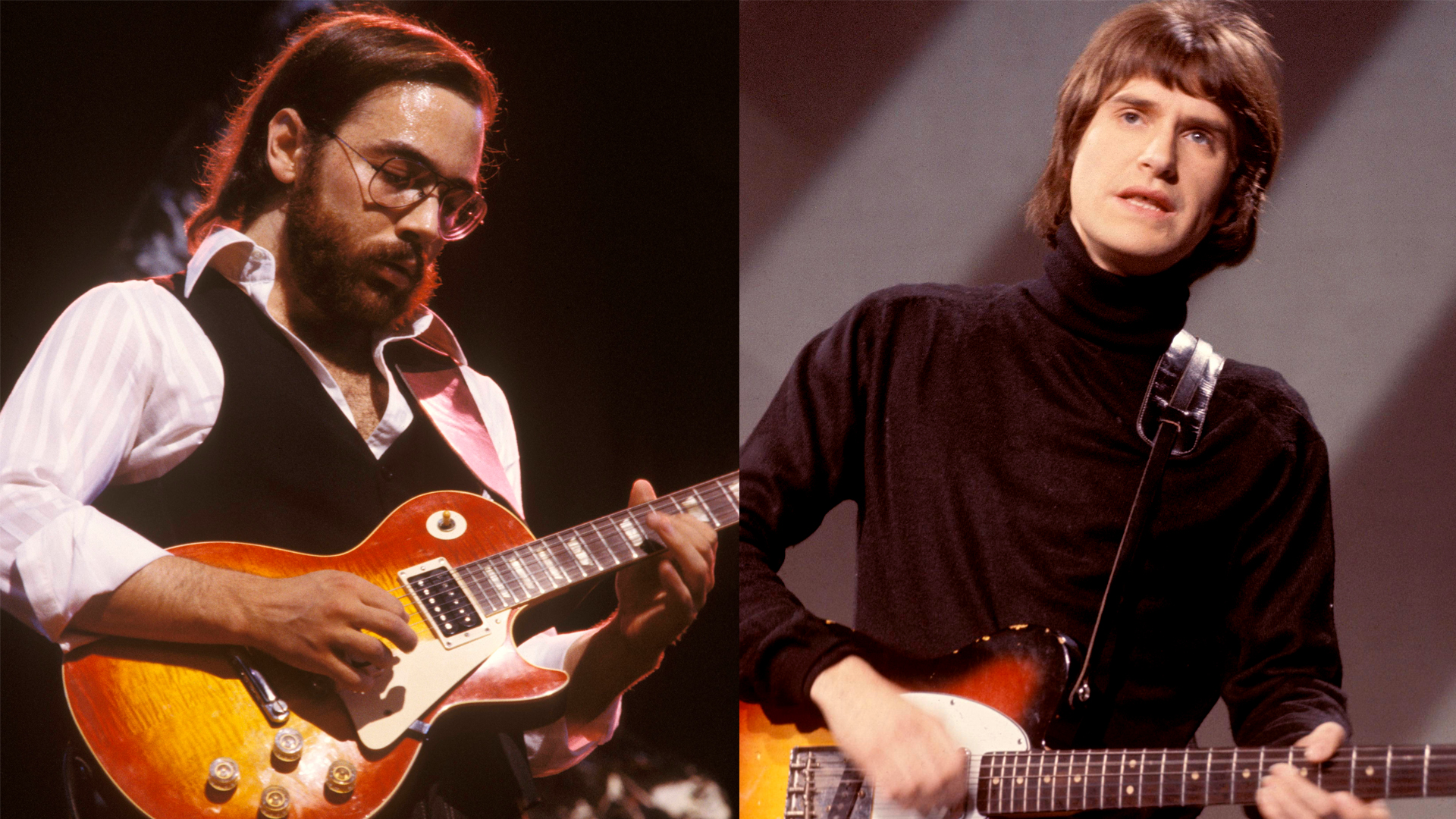“Success in Our Business Has Very Little Relation to Making Moving, Emotionally Meaningful Music”: Milk Carton Kids Kenneth Pattengale and Joey Ryan Are Leading a Modern Folk Revival
While their exquisite new album, ‘I Only See the Moon,’ continues to draw high praise the Americana duo points the way for fellow artists and music fans with the ambitious Los Angeles Folk Festival
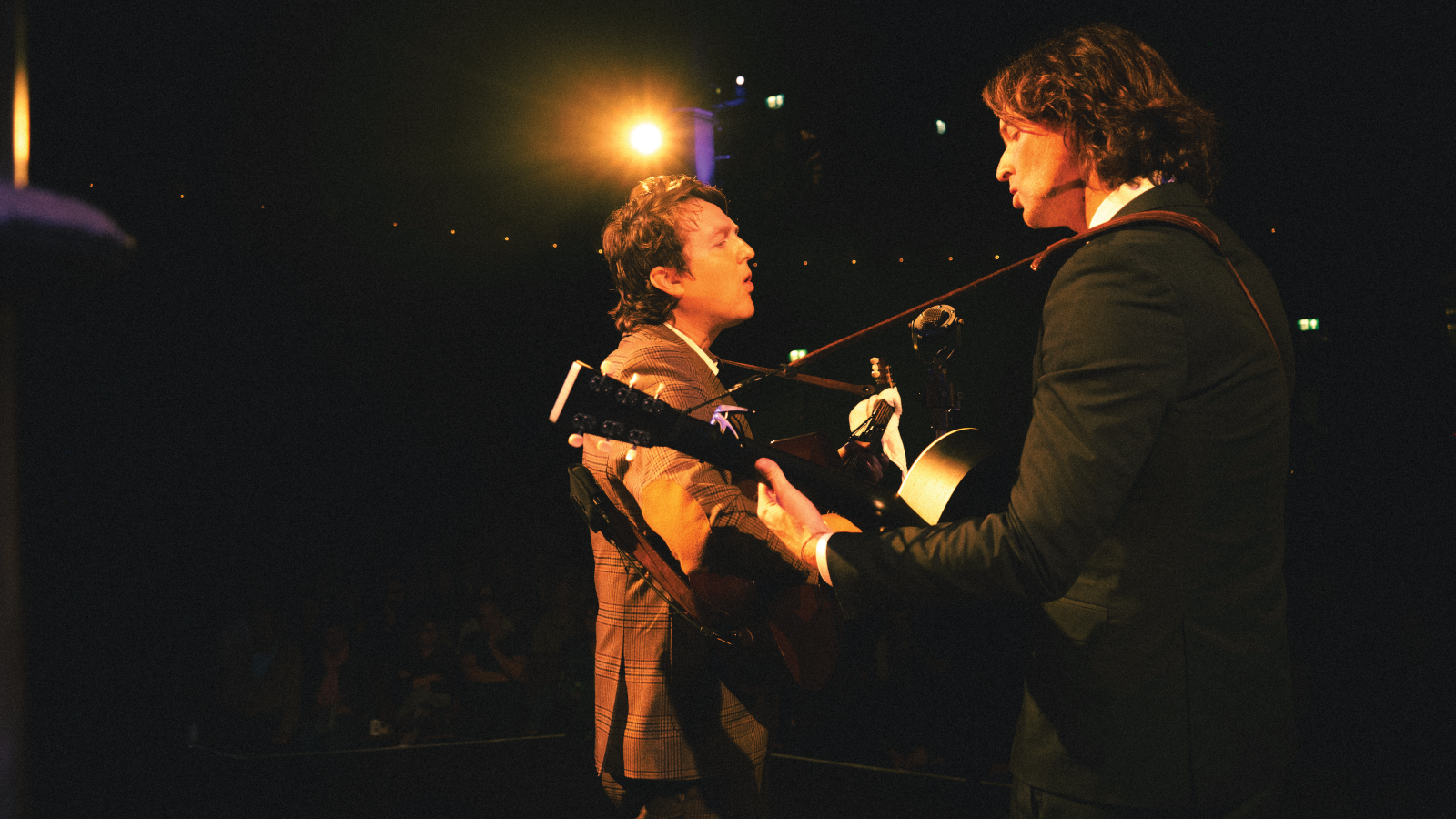
The Milk Carton Kids have grown to become perhaps the premier Americana folk guitar-and-vocal duo on the modern landscape, with iconic fans including Robert Plant and the late David Crosby. Now they’re using their position to cultivate a hip folk festival featuring a handpicked lineup of vital artists including Sierra Ferrell, Valerie June, David Garza, Tré Burt, Willie Watson (of the Old Crow Medicine Show), Haley Heynderickx and Waxahatchee.
The Kids have partnered with the L.A. Philharmonic to produce the Los Angeles Folk Festival at the Ford Theater over the first weekend in October. It will also serve as a hometown record release party for their adventurous new album, I Only See the Moon (Far Cry/Thirty Tigers).
Produced by Kenneth Pattengale, it finds the Kids expanding their tonal palette on a stellar song selection. In addition to their traditional dynamic, where Joey Ryan holds down the fort on a larger instrument while Pattengale colors on a parlor, they utilize a variety from Pattengale’s extensive collection of mostly vintage instruments, as well as new additions.
Pattengale adds textures on a David Crosby signature Martin 12-string, and Ryan plays banjo on the hypnotic “One True Love” and the bluegrass romp “When You’re Gone.” Both have also got brand-new Martins, including a 000-15 Pattengale has started playing when Ryan switches to banjo. When they do so, the Milk Carton Kids take a sonic step toward the Avett Brothers. At other times the added textural elements plus lush, melancholy vocals in epic songs such as “Wheels and Levers” and “North Country Ride” bring something more existential to mind, almost like a folky version of Radiohead.
Even though the album is mostly the two of them with a few overdubs, the sound is rich, full and varied. Some elements are obvious, such as Pattengale’s signature melodic flights and the string section on the haunting title track, but there are also lots of moments where the interplay is so seamless and the overdubs so woven into the fabric, that tunes become tapestries, and traditional roles become blurred in the bigger picture. All in all, the whole story is one of evolution.
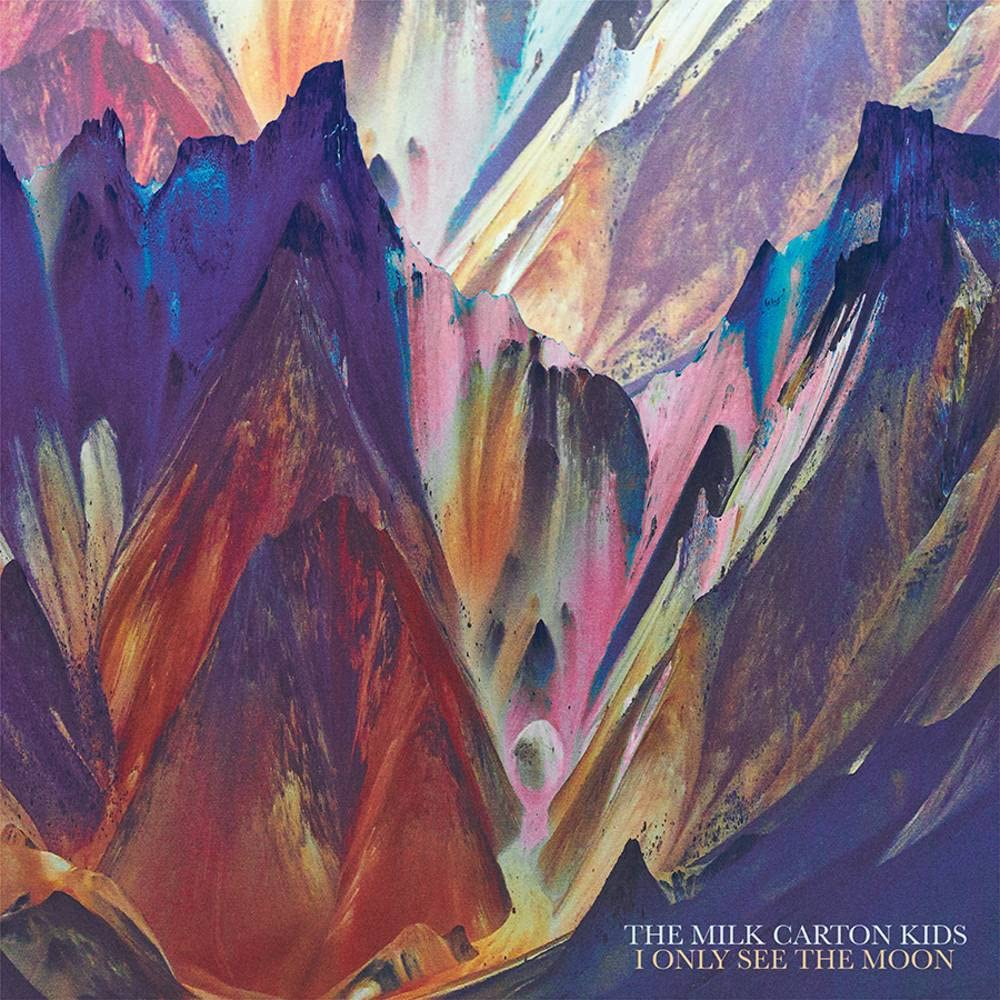
Can you provide a current take on your dynamic as a guitar duo?
JOEY RYAN In the simplest terms, I’m the rhythm guitar player and he’s the lead guitar player. That’s what it feels like when we have a backing band. But as a duo, I don’t feel like a rhythm guitar player, because there is no outside rhythm I have to adhere to, and our dynamic becomes very fluid. We play with time a lot. We not only speed up and slow down within a song – sometimes it’s within a measure or a part of a measure. We stretch, push and pull the time. The freedom to do that is one of the great joys of being a duo.
Get The Pick Newsletter
All the latest guitar news, interviews, lessons, reviews, deals and more, direct to your inbox!
KENNETH PATTENGALE After a dozen years, it’s pretty clear that those roles are always evolving. Before the pandemic, we spent a lifetime with ambitions, trying to build a career, worried about what the audience thought and trying to bring it. The first time we stood onstage together after we’d lost our job for a year and a half, I wasn’t worried about any of that. Interestingly, the minute that changed, everything from the music to the show and the connection between us got better. On the studio side, we decided that I would produce this album. I knew if I actually had the producer hat, I could bring some different things out of Joey, and he could focus on the artist role.
A big part of your sonic dynamic is the extended range, with Joey tuned down a step from standard and Kenneth higher up, often capoed. How did that come about?
RYAN Since you mentioned it, I’ll add that a more accurate way of describing my role is that I simply play the lower notes. We’re both establishing the rhythm in the conversation between the two of us. The way I got tuned down a whole step was literally an accident. I broke my knee when I was 22 and when they put tubes down my throat for the surgery, they scratched my vocal cords. I lost a lot of range off the top of my voice, so I started tuning down. I’ve played in a lower register ever since.
Before the pandemic, we spent a lifetime with ambitions...The first time we stood onstage together after we’d lost our job for a year and a half, I wasn’t worried about any of that
Kenneth Pattengale
It turned out to be kind of a happy accident that led to the sonic spread between the two of our guitars. For 10 years I played a 1951 Gibson J-45, and it sounded great down there. I recently switched to a Martin DSS-17, which is also a soft-shouldered dreadnought, and that seems to be a key element in my sound.
PATTENGALE That J-45 is a funny instrument that is both amazing and completely deficient. We’ve known there was a brace loose inside forever, but we’ve been advised not to mess with it until it falls apart because there’s a good chance something else about the tone will change in the process of a major repair. When he strums, it sounds a bit thin and wobbly; when he fingerpicks, it sounds better. If captured the wrong way, there can be a harshness and significant string noise, but if captured the right way, that falls into the distance.
I’ve spent my life collecting guitars, and now all nearly 100 of them are at our studio in North Hollywood, where we made the record, so for this one we finally had the facility to pick and choose. For all but one of Joey’s guitar songs, he played the low-end rhythm on my 1932 Gibson L-00. I found that around 2015 when we did an in-store performance at Mark Stutman’s Folkway guitar shop in Waterloo, Ontario, Canada. That ’32 L-00 was sitting in the corner. It was in bad shape, but it sounded amazing. The belly of the guitar underneath the bridge is swollen up by a half to three quarters of an inch.
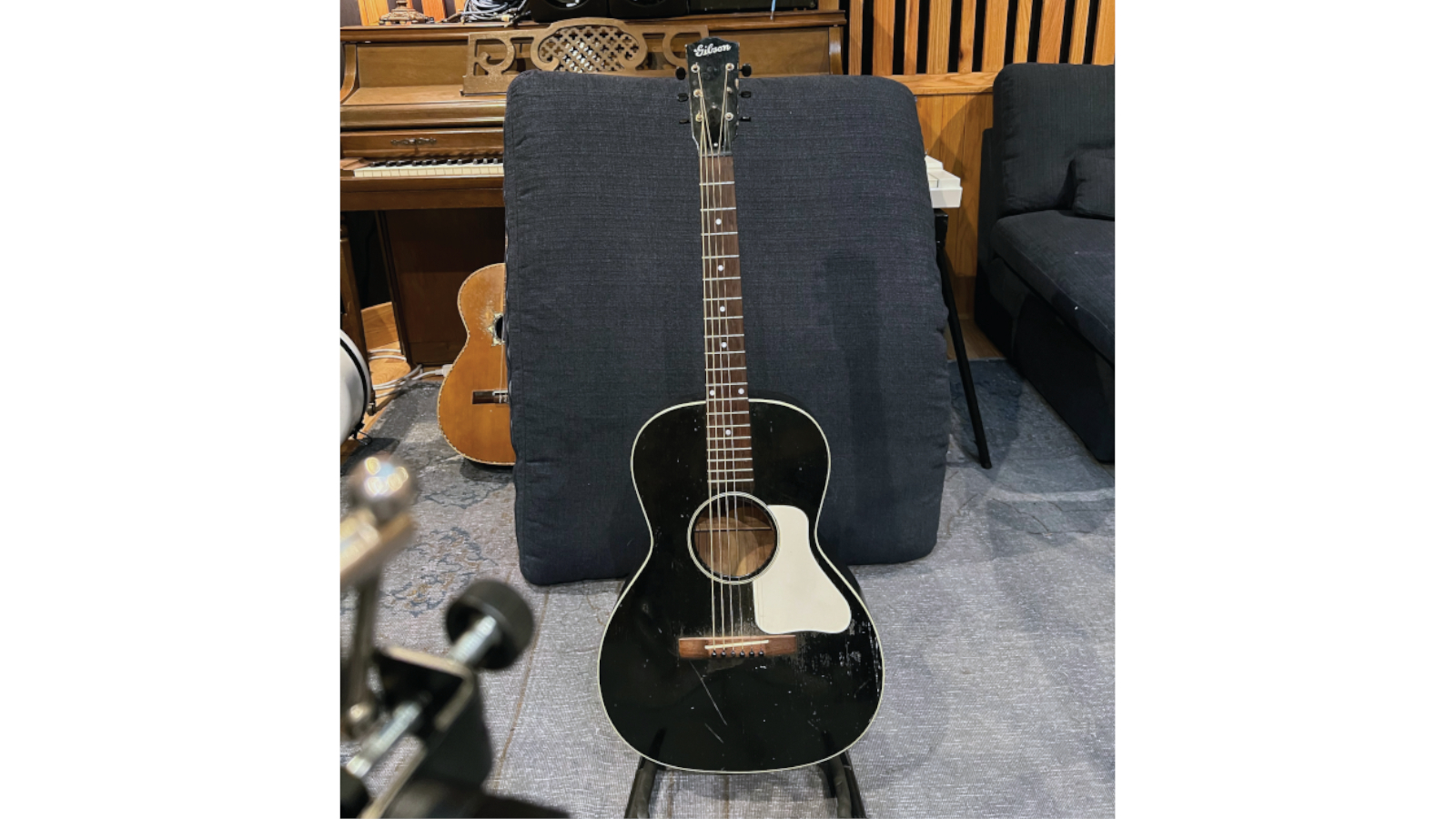
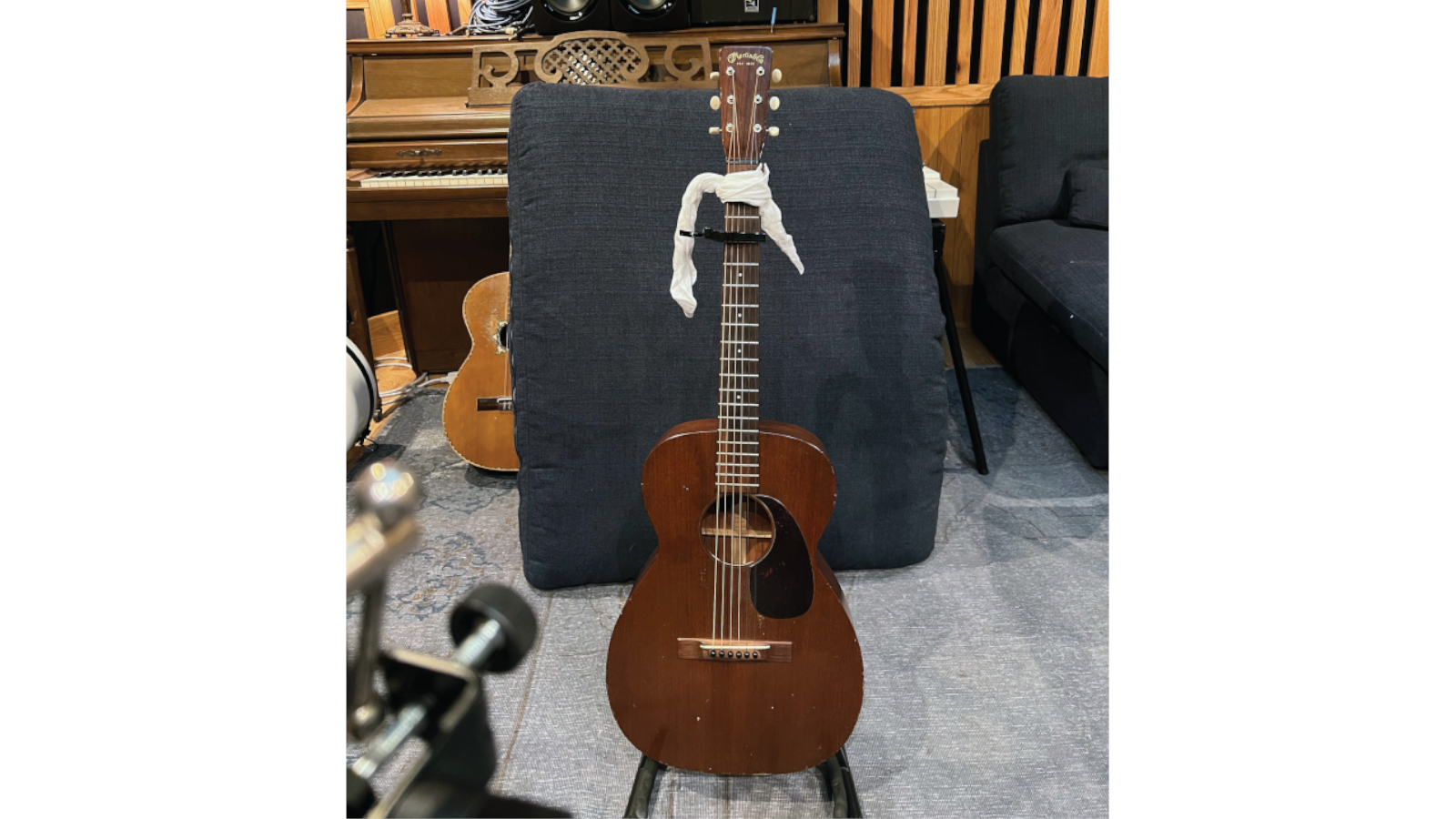
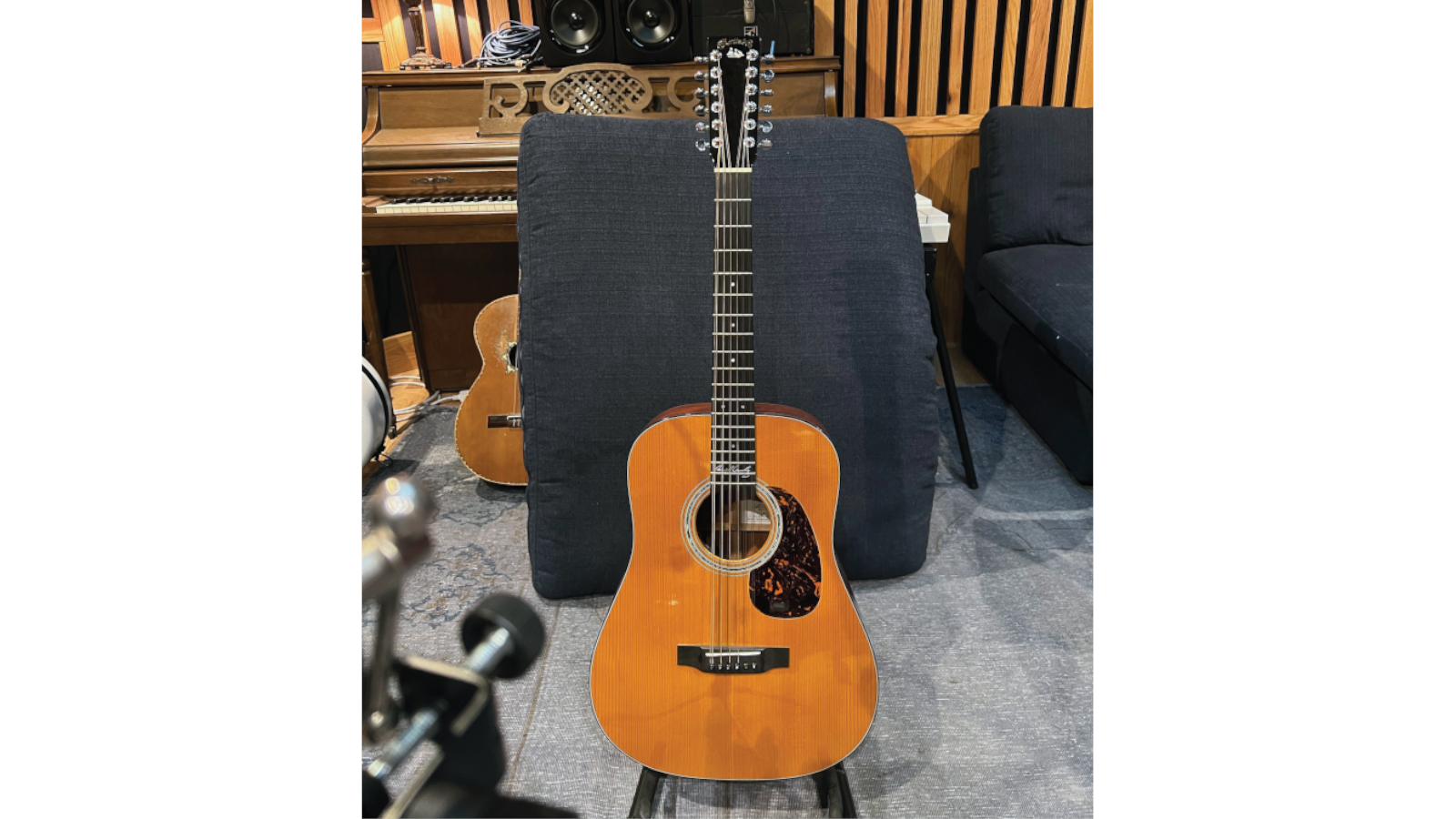
Mark told me that the guitar was rescued from Hurricane Katrina. It had literally floated off into the Gulf of Mexico for a few weeks, and it wound up at a guitar show. Mark is an expert at fixing pre-war Gibsons, but kind of like Joey’s guitar, he didn’t want to touch it because it sounded so magical and had already endured so much. It still has barnacles inside! But for the sound of Joey’s low-tuned parts, it’s pure magic.
That model is also special to us because that’s what Joe Henry and Rodney Crowell use. They’re both incredible guitarists, and that tone, especially for their live shows, is unrivaled and something to which we’ve always aspired.
Is your stalwart 1955 Martin 0-15 still your main guitar on the new album?
PATTENGALE Yeah, that’s my jam. That guitar has been around since the beginning of our band. It’s what I’m known for, and the basis for my Martin signature model. I’ve collected seven or eight 0-15s from the early ’30s through the late ’50s, and I have several contemporary versions as well. One day I decided to string up an 0-15 with nylons to see what it would sound like. The funny thing is that if you tune it up a half step above standard, that little mahogany body comes to life. It’s totally crazy, and that became my secret weapon for the studio.
Joey played it for the rhythm on the last song, “Will You Remember Me?” and he’s capoed pretty far up the neck, so for the first time on our albums the rhythm is in a higher register on a nylon-string guitar. I used the nylon-string to add texture to the second-to-last song, “North Country Ride,” which has a lot of guitar on it. That song is meant to be like traveling to the other side and back, maybe to another plane of existence or another universe.
The [1932 Gibson L-00] was rescued from Hurricane Katrina. It had literally floated off into the Gulf of Mexico for a few weeks...It still has barnacles inside!
Kenneth Pattengale
It’s nice to have the three-dimensionality of different textures in a wide sonic palette. The nylon is snuck in there to provide passing connective tissue counterpoint phrases that you really have to listen for, because that nylon-string sound is so warm, it fits in seamlessly. It’s a cool way to add melodic information without distracting the listener.
The outro solo on “North Country Road” is perhaps the most prominent guitar on the album, and that’s the steel-string, correct?
PATTENGALE The outro solo is definitely the 0-15 with steel strings, and we aimed at that as an important moment. If you make it that far into our album and you’re a fan of my guitar playing, you’re rewarded with a pretty classic Milk Carton Kids outro solo that takes its time and gets weird. It’s a proper love letter to a Martin guitar that’s now 80 years old. I feel like that recording makes it sound like you’re sitting in the best seat in the house.
The two banjo tunes bring a very obviously different element to the Milk Carton equation. How did that come about?
RYAN I fell in love with old-time banjo music about seven or eight years ago. We joke about old-time music as “acoustic techno” because it’s very repetitive and trancy. The banjo’s biggest influence is on my songwriting. I want the banjo songs to be more looping and repetitive because that’s what I like about them.
PATTENGALE When Joey fell in love with clawhammer banjo style, I bought him a custom banjo for his birthday.

RYAN J. Romero Banjos is operated by Jason and Pharis Romero up in Horsefly, British Columbia, and they build about five very beautiful banjos a year. The one that I designed with them is a five-string with a sound that goes beyond warm. It’s as dark as a banjo can be. The visual aesthetic matches. The wood is all very dark and the metal is a stained brass color. It’s also stark. There’s no embellishment whatsoever. It looks like a master craftsman could have been built it a hundred years ago.
PATTENGALE When Joey plays the banjo, my 0-15 doesn’t hold down the bottom end in a satisfying way. The perfect prescription would be a Martin 000-18, and that was the one guitar missing from my collection. I’ve never been able to pull the trigger on a vintage one because my good friend Julian Lage has a 1941 000-18 that’s maybe the best guitar I’ve ever played and heard, and none I tried measured up to his. But for this utilitarian situation where the banjo is the star of the show, I found that a brand-new Martin 000-18 right off the rack had enough dimension, clarity and low end to carry the track.
Are there any other new guitar voices in the mix?
PATTENGALE I thought a 12-string would be an interesting voice, because I’ve always loved the sound, and there’s a deep tradition of 12-string guitar in American folk music from the Everly Brothers to Paul Simon to David Crosby. I didn’t have a good one of those either, and Fred Greene at Martin sent me a David Crosby signature model that they had at headquarters as an office guitar. It sounds so cool. It’s got that magic that comes from having 12 frets to the body. It’s all over the new record and remains one of my favorite guitars to play.
We got eight of the people that were at the top of our list for what we believe is a vital representation of American folk music in 2023
Joey Ryan
Did either of you ever meet or play with Crosby?
RYAN I was working as creative director on the radio show Live From Here with Chris Thile as the host and Crosby as a guest. Crosby, Stills & Nash might be the band that I’ve listened to the most in my life. To sit around and hear him rehearsing was… I was a little too starstruck to even talk to him at first, but when I introduced myself, he said that he liked our band. It was validating, and so memorable to spend the day with him. There he was with his red beanie on at about age 80, and he sounded every bit as good as on the records. It was the sound of a different generation, but still absolutely amazing. It’s tragic he’s not around anymore. We definitely would have aggressively tried to convince him to come do a song unannounced at the festival.
What was the plan from the get-go?
RYAN We made a dream list of the ideal bill for a Los Angeles folk festival, and I can’t believe how well it worked out. We got eight of the people that were at the top of our list for what we believe is a vital representation of American folk music in 2023.
PATTENGALE We’re insanely lucky that the L.A. Phil was willing to come onboard as a production partner. To have that voice helping us find an audience is unparalleled, and they’ve been incredible in their deference to our ambition for this idea. We have huge esteem for the folk festivals that define very specific musical communities in our country, such as Newport and Philadelphia, and the Canadian folk festivals as well. We haven’t had that in Los Angeles. But we didn’t want to be all arrogant, like, “Here’s a massive folk festival in Los Angeles because we’re L.A. and we have big things. Pay attention because this is serious.” We wanted to plant a small seed in a little part of the community that we know, and see how it grows.
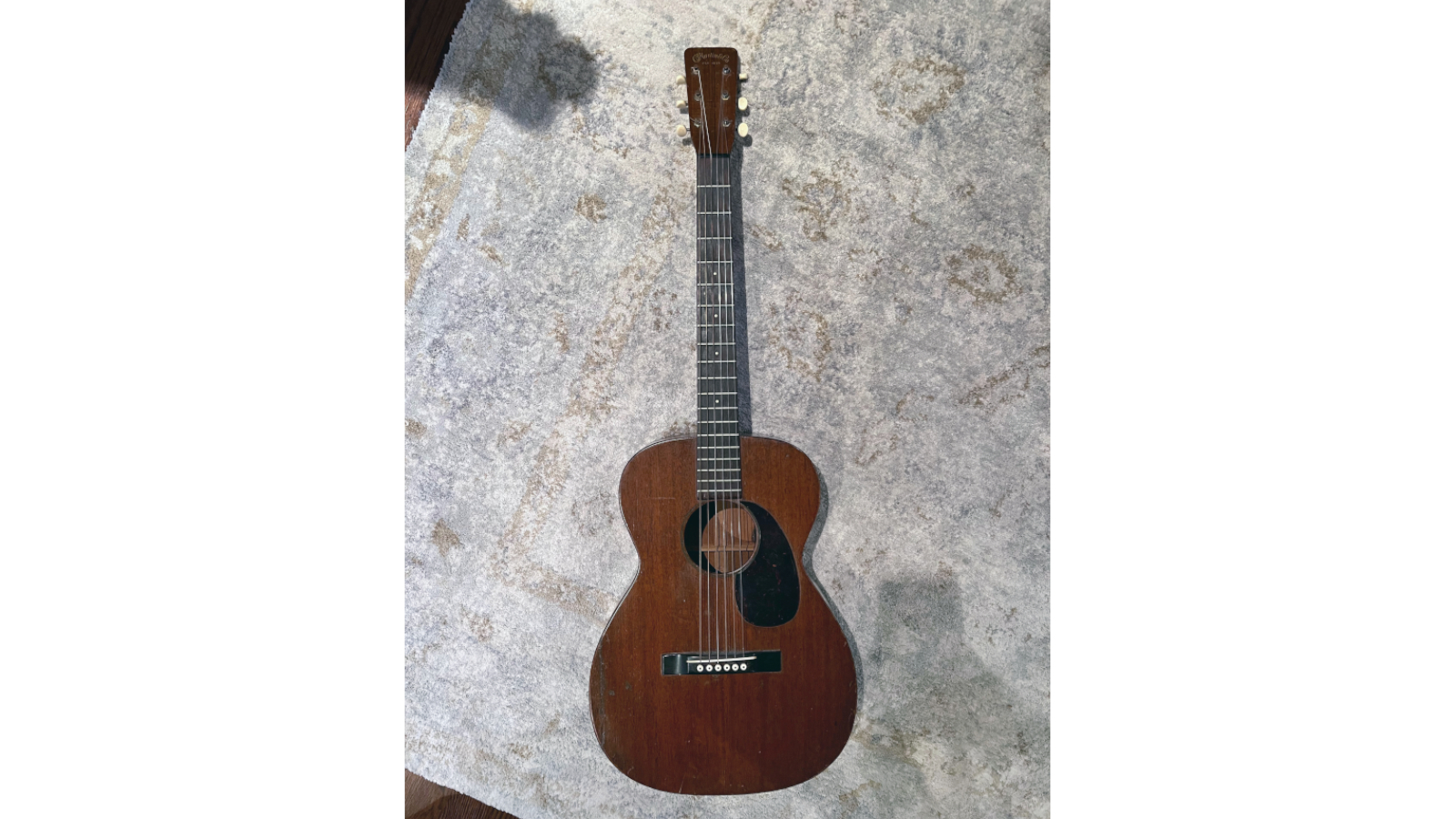
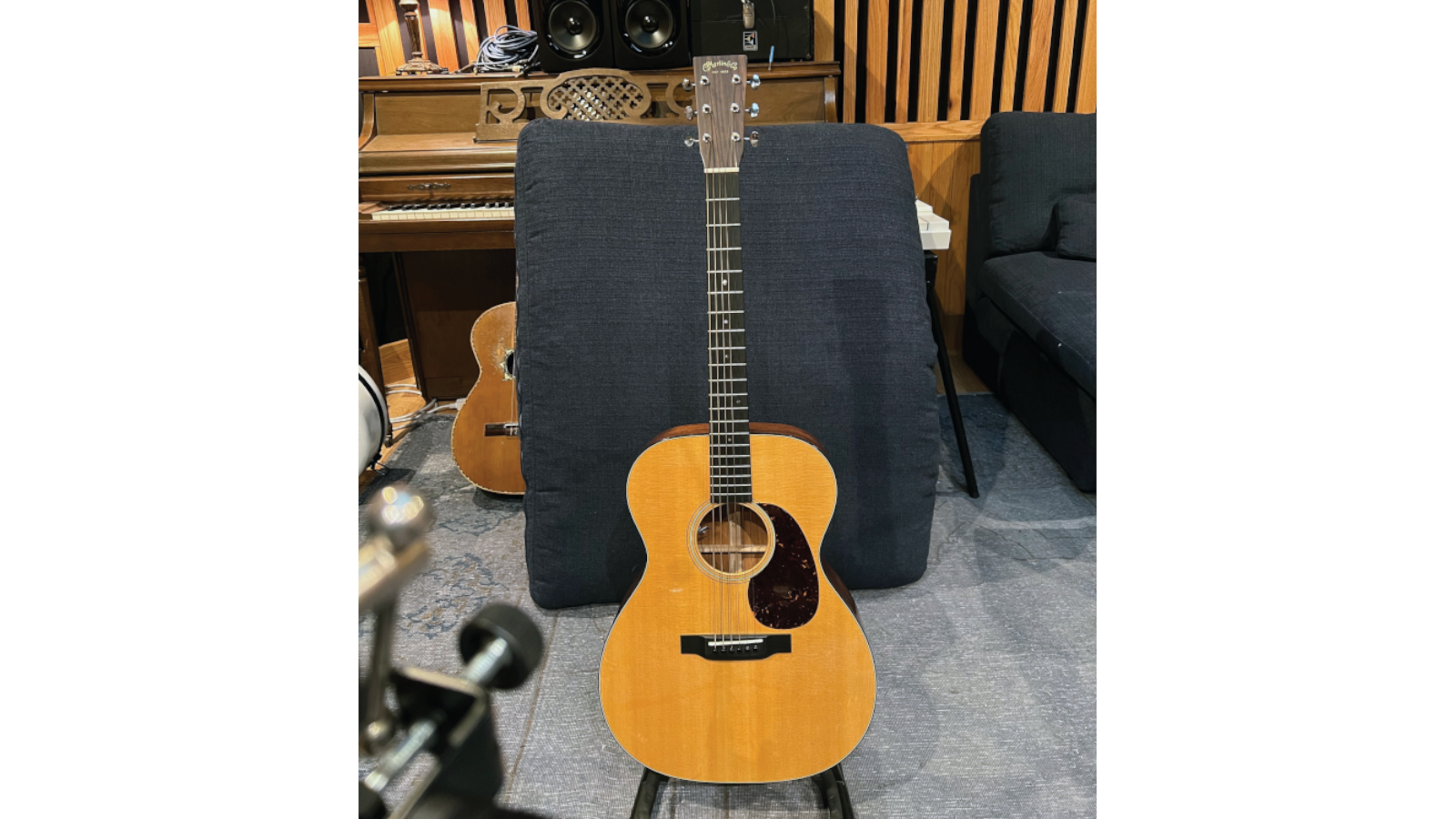
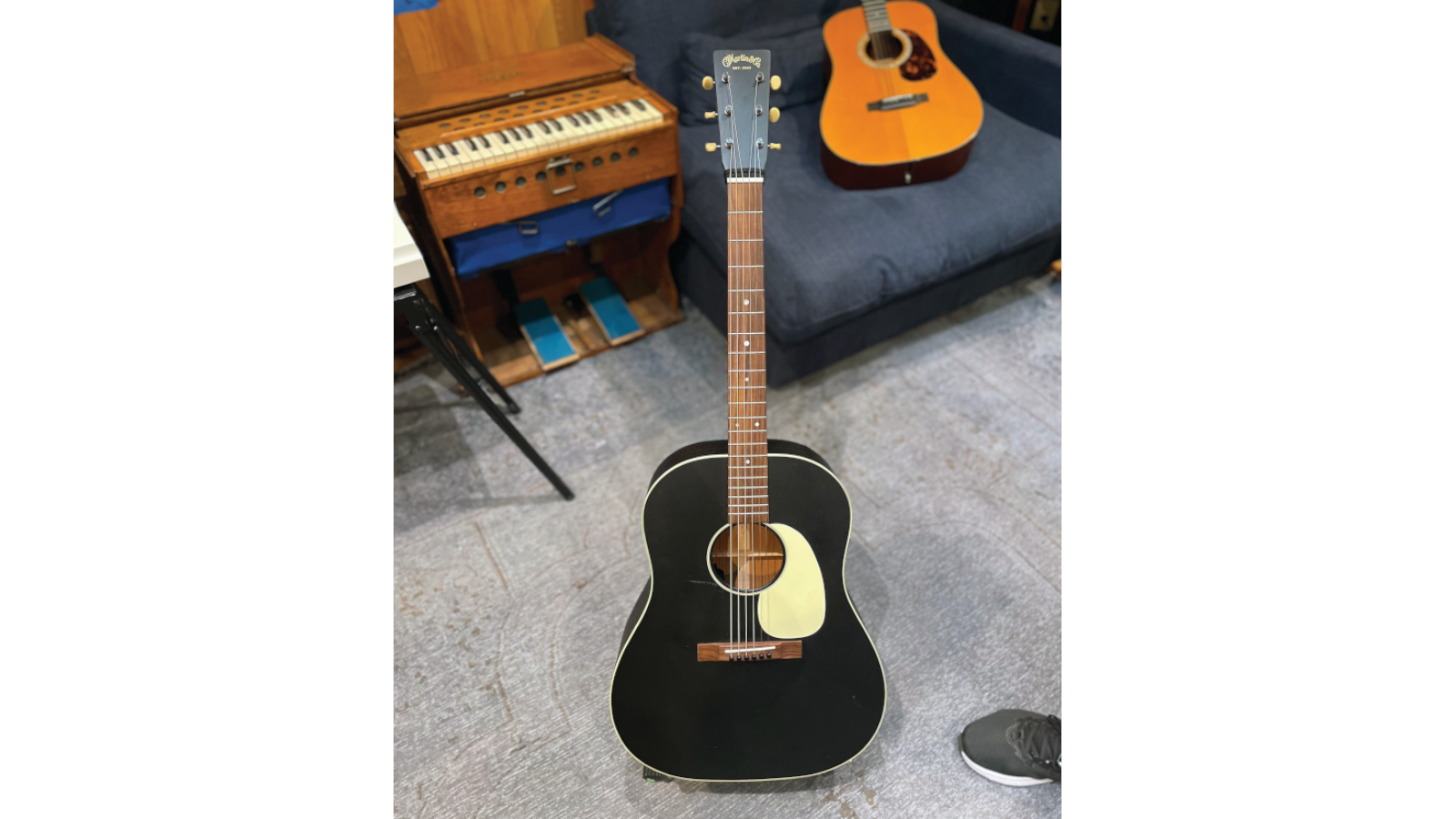
The coolest thing about our job in our community is seeing a next-generation artist grow into something that hasn’t happened in music. A perfect example is our Saturday night headliner, Sierra Ferrell. Vocally, she’s like the reincarnation of Patsy Cline, and she’s a good guitar player, but she’s also an unapologetic stoner and circus-like performer with a hilarious sense of humor and a stage presence unlike anybody you’ve ever known. For us it’s like, Here’s a water cooler that we can gather around. Let’s check out what’s pulling us into the future.
So rather than trying to pull out all the legacy artists and fill up the Hollywood Bowl, we found a smaller venue where we can book people on the verge of setting the next tone. We’re trying to throw a little party that in no way encapsulates the whole thing, but gives a little taste of what we believe will continue to establish itself as important music.
RYAN Tré Burt, for example, is one of the great songwriters working today, and he’s just getting started. I don’t say that lightly.
PATTENGALE Joey and I have had colleagues over the past 10 years that aren’t half as successful as us, but are 10 times more talented. If the gods were just, these artists would have much bigger audiences. We’ve learned that success in our business has very little relation to making moving, emotionally meaningful music. It’s important to do any work within your musical community to help connect people that are making meaningful music to audiences that will receive it.
As far as we’re concerned, it’s not a good deed; it’s not for anybody else. It’s the reason that we’re on Earth. If we’ve devoted ourselves to a life of music and those are the rules, then there’s good reason for us to spend a lot of time trying to connect the dots between music that means a lot to us and an appreciative audience. That’s time well spent.
Jimmy Leslie has been Frets editor since 2016. See many Guitar Player- and Frets-related videos on his YouTube channel, and learn about his acoustic/electric rock group at spirithustler.com.
“I felt myself starting to cry.” Eric Clapton’s 'MTV Unplugged' Martin acoustic returns in two guises. But Slowhand’s affinity for the guitar brand began long before that seminal live performance
"I have a Mercury on the guitar now, which makes me very happy.” Brian May’s new signature Gibson SJ-200 features a subtle tribute to the late Queen singer Freddie Mercury


